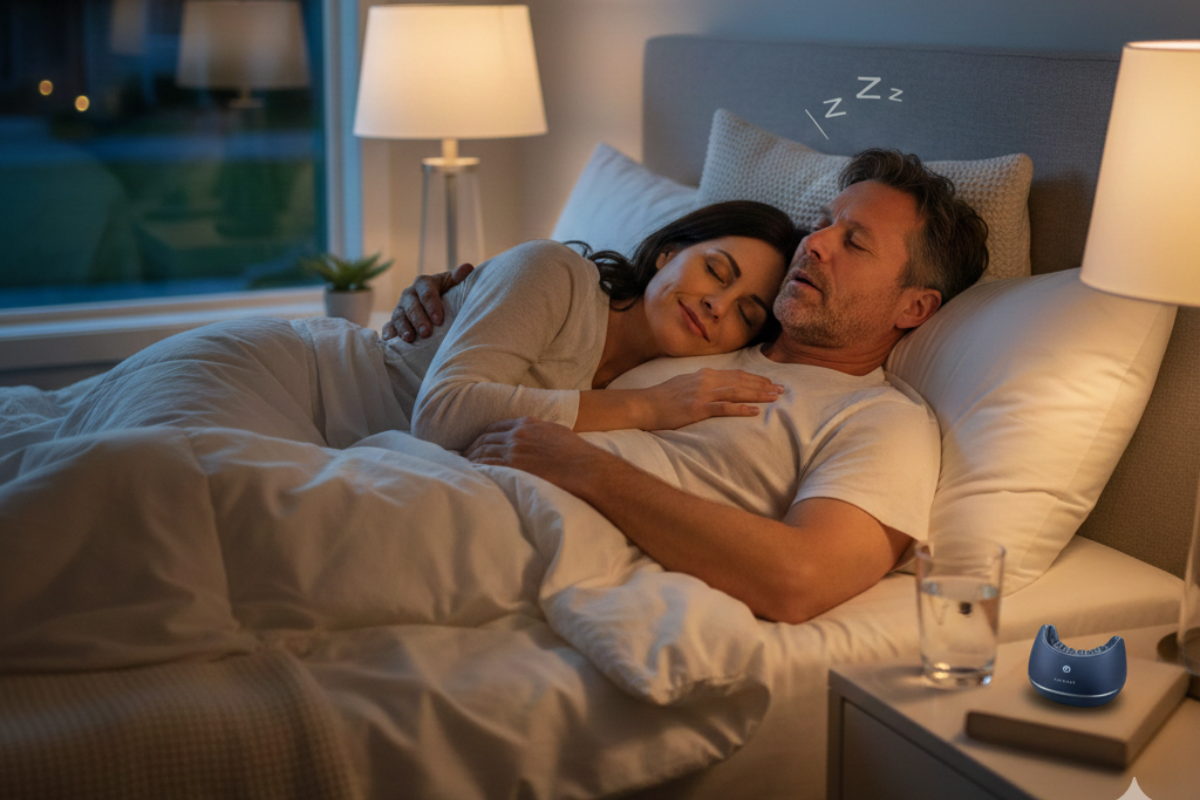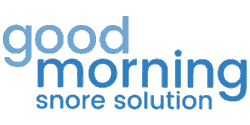Free Shipping - On Orders Over $99 (USA, Canada, UK, & AU)

3 Types of Mouth and Throat Exercises for Sleep Apnea
January 08, 2024 3 min read
The continuous positive airway pressure (CPAP) machine remains the gold standard in sleep apnea treatment. But as sleep apnea sufferers are well aware, CPAPs can be very uncomfortable and claustrophobic even. They’re also noisy, which can disturb your and your bed partner’s sleep.
For those who find CPAPs hard to use due to the above reasons, there are alternatives that may help reduce the severity of their sleep apnea with less discomfort. One such treatment is mouth and throat exercises. We’ll explain how these work and share a couple of them so you can start treating your sleep apnea at home.
About Exercises for Sleep Apnea
In OSA patients, the soft tissues in the upper airways collapse and block normal airflow during sleep. This causes those pauses in breathing and gasping that are characteristic of OSA. Improving the tone, tension, and mobility of these muscles and surrounding tissues can reduce airway closures during sleep [1].
Mouth and throat exercises for obstructive sleep apnea (OSA) are also known as orofacial myofunctional therapy for OSA. This treatment aims to improve upper airway dilator muscles, the tongue muscle, and surrounding tissues, which are all important in keeping the airways open during sleep.
This treatment was first proposed in the 1990s by researchers from the Sleep Laboratory, Pulmonary Division, Heart Institute (InCor) at the University of São Paulo Medical School. Since then, studies have found that these exercises may reduce the AHI by 50% [2]. Oxygen levels, daytime sleepiness, and snoring were also found to improve.
Exercises to Reduce Sleep Apnea Severity
Mouth and tongue exercises for OSA aim to work the tongue, upper airway muscles, and facial muscles. These 20-minute workouts should be performed twice a day for 6 weeks before you notice any improvement [3].
1. Tongue exercises
Tongue slide (2-3 min)
Place the tip of your tongue where your upper teeth meet your gums. Slowly slide your tongue towards the back of your mouth. Repeat.
Tongue stretch (1-2 min)
Stick your tongue out as far as you can and hold for 10 to 15 seconds. Gradually increase the duration with each subsequent stretch. Repeat 5 times.
Tongue push up (1-2 min)
Press your entire tongue against the roof of your mouth and hold for 10 to 15 seconds. Repeat 5 times.
Tongue push-down (1-2 min)
Press the tip of your tongue against your front lower teeth. Push the rest of your tongue against the bottom of your mouth and hold for 10 seconds. Repeat 5 times.
2. Face exercises
Cheek hook (1 min)
Place your index finger inside your mouth and pull your left cheek outward while using your facial muscles to pull your cheek inward. Repeat 5 to 10 times on each side.
Jaw stretch (1 min)
Close your mouth tightly and purse your lips. Open your mouth and let your mouth and jaw muscles relax. Repeat 5 to 10 times.
Side-to-side jaw workout (1 min)
Open your mouth wide and move your jaw from side to side. Adjust your mouth and repeat again several times.
3. Throat and upper airway exercises
You can also exercise your throat muscles and upper airways with breathing techniques and by pronouncing vowels.
Nostril breathing
Close your left nostril with your index finger and breathe in through your right nostril. Release your left nostril and now close your right nostril, breathing out through your left nostril. Repeat about 10 times.
Vowel sound pronunciation
Pronounce the vowel sounds, a e, i, o, u, as you normally would. Then try to stretch out how long you pronounce each vowel and alternate with quickly pronouncing the vowel. Repeat 10 to 20 times for each vowel.
Bonus Tip
If you have symptoms of sleep apnea, such as chronic fatigue, unrefreshing sleep, waking up with a headache, dry mouth in the morning, and snoring, it’s important to speak to your doctor. Sleep apnea is a potentially serious sleep disorder. Without treatment, it tends to get worse and can lead to chronic health and occupational problems.
CPAPs usually work to reduce symptoms, but exercises can be a good alternative if you have a mild case and find CPAP hard to adhere to. These exercises may help with simple snoring as well when alternatives like weight loss or tongue-stabilizing devices.
References:
- Rueda JR, Mugueta-Aguinaga I, Vilaró J, Rueda-Etxebarria M. Myofunctional therapy (oropharyngeal exercises) for obstructive sleep apnoea. Cochrane Database Syst Rev. 2020;11(11):CD013449. Published 2020 Nov 3. doi:10.1002/14651858.CD013449.pub2
- Camacho M, Certal V, Abdullatif J, et al. Myofunctional Therapy to Treat Obstructive Sleep Apnea: A Systematic Review and Meta-analysis. Sleep. 2015;38(5):669-675. Published 2015 May 1. doi:10.5665/sleep.4652
- Ye D, Chen C, Song D, et al. Oropharyngeal Muscle Exercise Therapy Improves Signs and Symptoms of Post-stroke Moderate Obstructive Sleep Apnea Syndrome. Front Neurol. 2018;9:912. Published 2018 Oct 29. doi:10.3389/fneur.2018.00912
Also in Blog

Healthy Sleep Goals For 2026
December 22, 2025 6 min read

💨 Are Your Nighttime Breathing Issues Robbing You of Your Health and Your Energy?
December 12, 2025 3 min read
Breathing issues during sleep, collectively known as sleep-disordered breathing, are a major public health concern.

Is Your Snoring a Sign of Something More Serious? Unpacking the Science of Sleep
December 05, 2025 3 min read
When you snore, what's actually happening?
Join our Insiders Club
Every week you will receive specials, discounts, and giveaways.
Categories
- Better Sleep
- depression
- Fitness
- funny animal
- Global Citizenship
- health
- Mental Health
- mouthpiece
- nutrition
- pillow
- Productivity
- relationships
- sleep
- sleep apnea
- sleep deprivation
- Sleep Tech
- snoring
- snoring humor
- snoring jokes
- snoring sounds
- stop snoring
- StopSnoringStartLiving
- technology
- Tongue displacement
- travel
- video
- Young Adult

